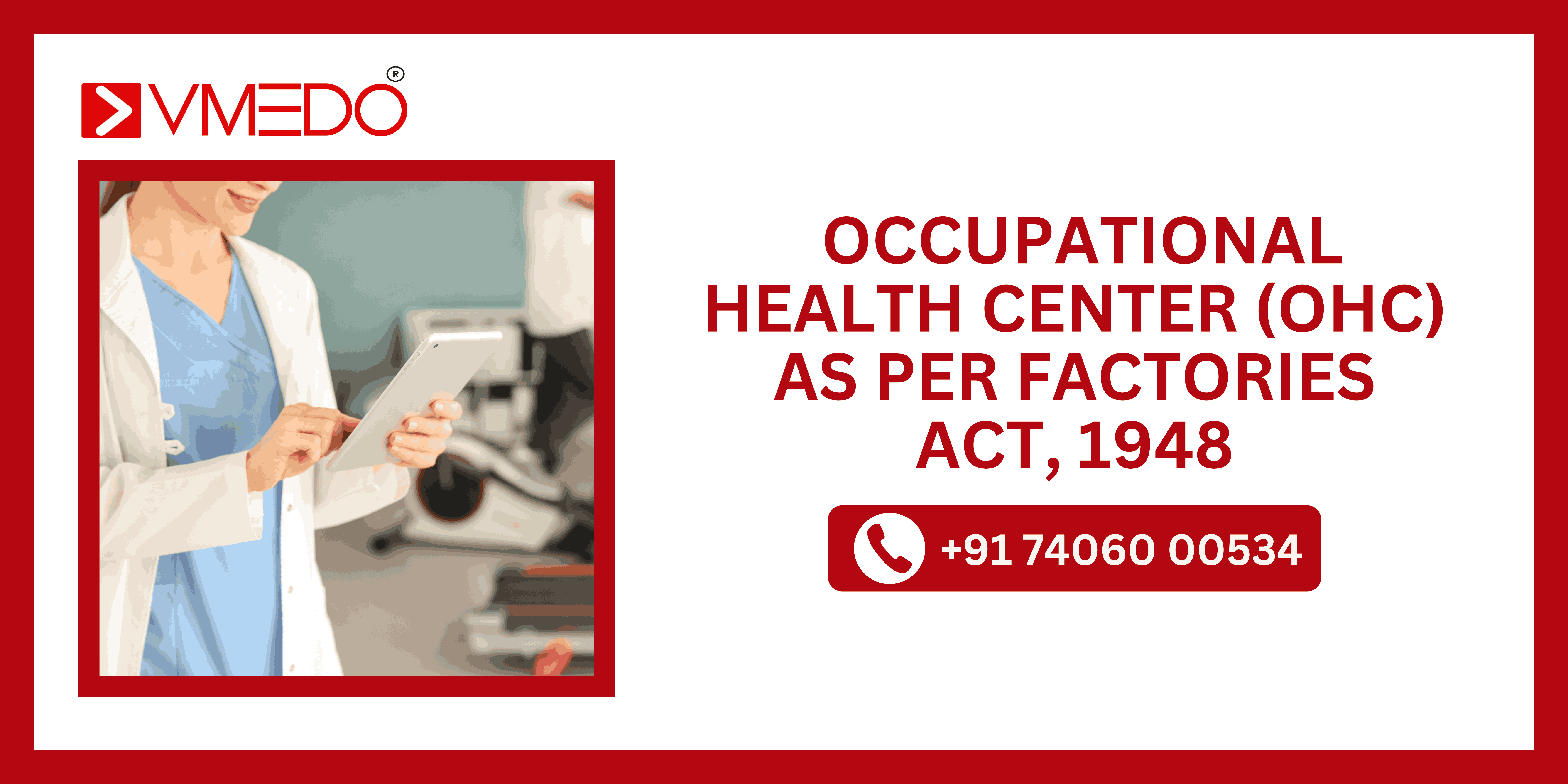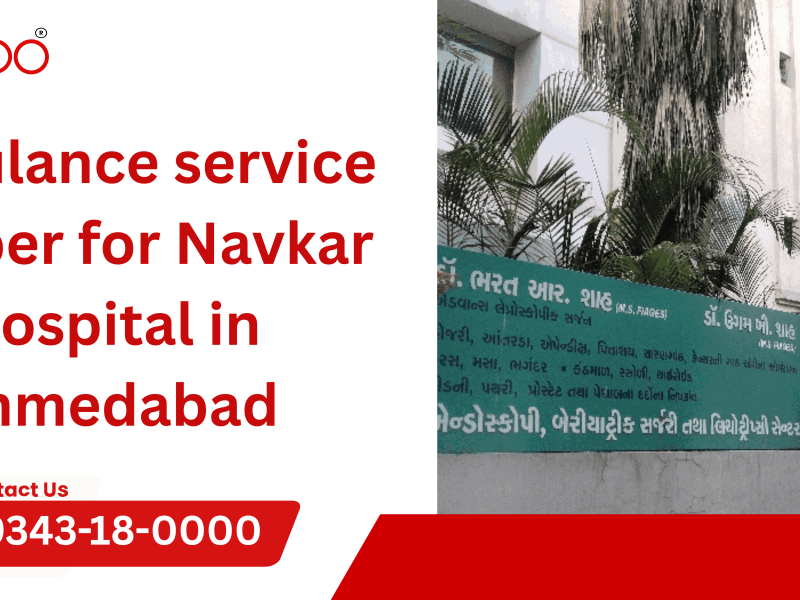Setting up an Occupational Health Center (OHC) is not just a regulatory requirement; it’s a commitment to your employees’ health and safety. At VMEDO, we specialize in creating customized OHCs that align with the Factories Act, 1948, ensuring compliance while enhancing workplace well-being. Contact now at +91 74060 00534 to get Occupational Health Center set up.
What is an Occupational Health Center (OHC)?
An Occupational Health Center (OHC) is a specialized medical facility located within factories or industrial establishments, designed to cater specifically to the health and safety needs of workers. Its primary purpose is to offer preventive, curative, and emergency healthcare services to employees, ensuring a safe and healthy working environment.
OHCs are usually staffed with qualified healthcare professionals such as doctors, nurses, and paramedics, who are trained to handle workplace-related injuries, illnesses, and emergencies. They conduct regular health screenings, provide first aid, and address any occupational hazards workers might face.
Legal Requirements Under the Factories Act, 1948
As per Section 45 of the Factories Act, 1948, factories employing a certain number of workers must set up an OHC to ensure immediate medical care. The main requirements are:
- For factories with hazardous processes: The factory must establish an Occupational Health Centre (OHC) to ensure employee safety and well-being.
- For factories with 500 or more workers: The factory must provide one full-time medical officer and necessary nursing staff.
- For factories with 200 to 500 workers: The law mandates the appointment of at least one part-time medical officer.
- Availability of medical facilities: The OHC must be equipped with basic first-aid equipment, life-saving drugs, and a functional ambulance.
- Health checkups: Regular health checkups should be conducted for employees, especially those exposed to hazardous substances or working in high-risk environments.
- First-aid rooms: Factories must have designated first-aid rooms that meet the prescribed standards and are staffed by trained professionals.
By partnering with VMEDO, your factory can easily comply with all OHC regulations while ensuring the health and safety of your workforce.
How to Set Up an Occupational Health Center (OHC):
1. Assess Factory Needs:
Begin by evaluating the number of employees and identifying workplace-specific health risks to determine whether you need a full-time or part-time medical officer. VMEDO offers a comprehensive assessment service to help you identify your OHC requirements and ensure compliance with legal standards.
2. Identify Location: Choose a centralized and easily accessible area within the workplace for the OHC, ensuring all employees can reach it quickly in an emergency. The layout should ideally measure 10×20 feet, providing ample room for essential equipment, beds, and consultation areas. Design the space to prioritize privacy for consultations and treatments, and consider proximity to exits or elevators for emergency access.
3. Clinic Setup: Design the clinic layout to include essential medical equipment such as examination beds, diagnostic tools like thermometers and blood pressure monitors, and emergency care kits stocked with items like oxygen masks and defibrillators. Ensure the space is well-ventilated and adequately lit, utilizing both natural and adjustable lighting for comfort during assessments. Create organized storage areas for medical supplies to keep them easily accessible while maintaining a clutter-free environment. A thoughtful clinic setup enhances patient care and operational efficiency.
4. Hire Qualified Staff: Employ experienced healthcare professionals, including doctors, occupational health nurses, and paramedics, based on the size of the organization and anticipated needs. It’s essential to assess the specific health services required to determine the right staffing levels. Consider incorporating rotational or visiting specialists to provide additional expertise as needed, ensuring comprehensive care for employees. To learn more about the qualifications and roles of medical professionals for an OHC, visit our blog on medical professionals for OHC.
5. Standby Ambulance: Arrange for a standby ambulance on the premises or on-call to ensure rapid transport for critical cases, minimizing response times in emergencies. Equip the ambulance with essential life-support equipment, including oxygen tanks, cardiac monitors, and medical supplies, to provide immediate care during transport. Additionally, VMEDO provides comprehensive ambulance services, ensuring that trained medical personnel accompany the ambulance to deliver continuous care from the OHC to the hospital, enhancing workplace safety and health management.
6. Partner with a Local Hospital: Form a collaboration with a nearby hospital to ensure easy referral and immediate support during emergencies. This partnership is crucial for providing timely care and facilitating efficient patient transfers. Establish a clear communication protocol to streamline the referral process and ensure that all staff are aware of the procedures. Additionally, VMEDO provides tie-ups with the nearest three hospitals to guarantee immediate admission for patients, further enhancing the effectiveness of your Occupational Health Center.
7. Records Maintenance: Implement a system to maintain and update employee health records, medical histories, and incident reports. These records are essential for monitoring health trends and ensuring compliance with regulations. It’s important to keep various forms, such as medical examination records, incident reports, and health assessments, organized and accessible. To know more about the necessary forms to maintain records, visit our blog on Important Forms to be Kept by EHS as per the Factories Act of 1948.
8. Standard Operating Procedures (SOPs): Develop comprehensive Standard Operating Procedures (SOPs) for routine healthcare, emergency responses, and managing specific workplace hazards. These SOPs ensure uniformity and quality in care by outlining clear protocols, responsibilities, and necessary resources for staff. Regularly review and update the procedures to reflect changes in regulations and best practices. Training staff on these SOPs is essential for maintaining high care standards and promoting a culture of health and safety within the organization.
9. Maintain Required Forms and Documents: Keep essential forms and documents in compliance with regulatory requirements, including incident forms, medical checkup records, and inspection reports. Maintaining these records is crucial for ensuring accountability and transparency in healthcare operations. Organize them systematically to facilitate easy access and regular audits, ensuring that all documentation is up-to-date and accurately reflects the services provided. This practice not only supports compliance but also enhances the overall efficiency of the Occupational Health Center.
10. Biomedical Waste Disposal: Establish a compliant disposal system to safely manage biomedical waste, including used syringes, bandages, and other medical supplies. Use clearly labeled containers for different waste types and train staff on proper disposal practices. Regular pickups by licensed waste disposal companies are essential for safety and compliance. To know more, visit our blog on How to Manage Biomedical Waste.
11. Training and Awareness Programs: Create a training schedule to regularly educate staff and employees on first aid, CPR, and workplace safety, which is essential for fostering a culture of health awareness. Regular training sessions prepare everyone to respond effectively in emergencies. Additionally, VMEDO provides tailored training programs designed to meet the specific needs of your organization, enhancing employee skills and confidence in handling health-related situations.
12. Annual Audit: Conduct a yearly audit of the Occupational Health Center (OHC) to assess performance, regulatory compliance, and areas for improvement. This involves reviewing healthcare services, staff qualifications, and protocols, incorporating feedback from key stakeholders. Use the findings to refine procedures and training programs, ensuring compliance and fostering continuous improvement for better employee health outcomes.
Why Choose VMEDO?
With over a decade of experience in healthcare services, VMEDO has become a trusted partner for organizations looking to enhance workplace safety and ensure compliance with health regulations. Our Occupational Health Centre (OHC) setup services are designed to be fully customizable to your specific needs, offering a seamless solution to meet both legal requirements and employee well-being.
At VMEDO, we provide a one-stop solution that covers everything from:
- Medical equipment and supplies
- Qualified staffing of doctors, nurses, and paramedics
- Comprehensive health checkup programs
- First aid training for employees
We are dedicated to ensuring that your employees’ health and safety are always in the best hands, and we take pride in offering services that are reliable, cost-effective, and tailored to your organization’s unique needs.
Let VMEDO help you build a safer, healthier workplace that not only complies with regulations but also promotes a culture of well-being. To learn more about our services or to schedule a consultation, reach out to us today!
Frequently Asked Questions (FAQ) – How to Set Up an Occupational Health Center (OHC) as per factories act, 1948:
1. What is an Occupational Health Center (OHC)?
An Occupational Health Center (OHC) is a dedicated medical facility within a workplace that provides preventive, curative, and emergency health services to employees. It ensures workplace safety and well-being by complying with health and safety regulations.
2. Why is an OHC necessary in a factory?
As per Section 45 of the Factories Act, 1948, factories with a certain number of workers are legally required to have an OHC to handle workplace health risks and emergencies. An OHC reduces absenteeism, enhances productivity, and ensures legal compliance with health and safety regulations.
3. What costs do you incur when setting up an OHC?
The cost of setting up an OHC depends on factors such as the size of the workforce, the level of medical services required (full-time vs. part-time staff), and the equipment needed. VMEDO provides tailored OHC solutions that are cost-effective and compliant with legal requirements, ensuring you receive the best value while maintaining workplace safety standards. Contact VMEDO for a customized quote based on your specific needs.
4. What medical staff do I need for my OHC?
For factories with 500 or more workers, a full-time medical officer and nursing staff are mandatory. For factories with 200 to 500 workers, at least a part-time medical officer is required. VMEDO provides certified medical professionals to meet your staffing needs based on the size of your workforce.
5. What equipment do you need for an OHC?
An OHC must be equipped with essential medical supplies such as first-aid kits, life-saving drugs, defibrillators, oxygen cylinders, and stretchers. VMEDO supplies and maintains all equipment according to legal and safety standards.
6. How often should you conduct health checkups?
Conduct regular health checkups, especially for workers exposed to hazardous substances or in high-risk environments. VMEDO provides tailored health checkup programs that meet your industry’s needs and ensure the well-being of your employees.
7. Do I need to provide first-aid training to my employees?
Yes, it is recommended to train selected employees in basic first aid and emergency response to provide immediate care during emergencies. VMEDO offers first-aid training sessions to equip your workforce with the necessary skills.
8. How do I ensure my OHC remains compliant with regulations?
To maintain compliance with the Factories Act and other safety standards, you should regularly review and update your OHC facilities. VMEDO ensures that your OHC remains compliant by providing regular audits, updates, and recommendations.



